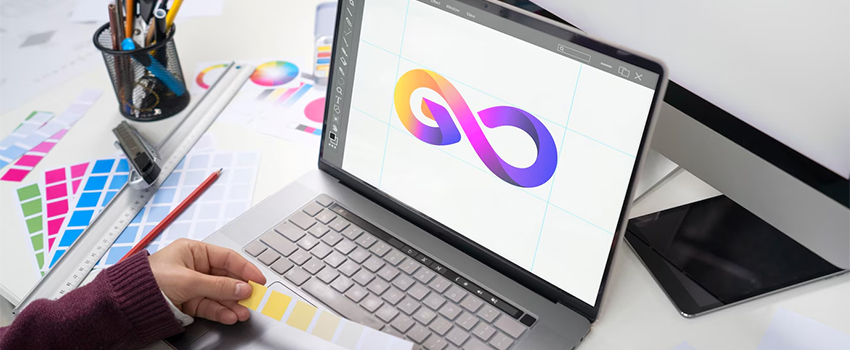In today’s digital age, user experience (UX) has become a critical component of graphic design. UX design aims to develop products that offer users relevant and meaningful experiences. It entails creating the entire product acquisition and integration process’s branding, design, usability, and function. In this blog post, we will discuss the vital role of user experience (UX) in graphic design and how it can significantly affect user satisfaction and your brand.

Enhances User Satisfaction: Improving user happiness is one of UX design’s main objectives. A well-designed user experience ensures that users find your product or service quickly and navigate. It lessens frustration and increases the likelihood of users having a positive impression of your brand. Users with a seamless experience are more likely to return and recommend your product to others, driving higher engagement and loyalty.
Improves Usability: Usability is a key aspect of UX design. It involves making products and interfaces intuitive and easy to use. Good usability means that users can achieve their goals efficiently and effectively. Graphic designers who focus on UX ensure that their designs are visually appealing and functional. This balance between aesthetics and usability is crucial for creating a product that users love.
Builds Brand Credibility: A positive user experience can significantly enhance your brand’s credibility. Your brand is enhanced when customers find your product aesthetically pleasing and straightforward. Consistent and thoughtful UX design shows you care about your users and their needs. It can build trust and credibility, essential for establishing a solid brand presence in the market.
Boosts Conversion Rates: Effective UX design can directly impact your conversion rates. Customers are more likely to finish desired actions, like making a purchase, subscribing to a newsletter, or completing a contact form, if they have a seamless and pleasurable experience. Graphic designers can help increase conversion rates and drive business growth by optimizing the user journey and eliminating friction points.
Increases Accessibility: UX design is vital in making products accessible to a broader audience. Inclusive design practices ensure that products are usable by people with diverse abilities and backgrounds. It includes designing for different devices, screen sizes, and input methods. By considering accessibility from the outset, graphic designers can create inclusive and welcoming products for all users.
Facilitates User Retention: Retaining users is often more challenging than acquiring new ones. A satisfying user experience can keep customers interested in and using your product again. By continuously refining and improving the UX based on user feedback and behavior, graphic designers can create a product that evolves with its users’ needs and preferences. This adaptability is crucial for long-term success.
Enhances Visual Appeal: While UX design prioritizes functionality and usability, it also improves a product’s visual appeal. Good UX design ensures that visual elements are attractive and purposeful. This harmony between form and function creates a cohesive and enjoyable user experience. Successful UX designers are graphic designers who recognize the value of aesthetics in leaving a lasting impression.
Incorporating user experience into graphic design is no longer optional—it’s essential. At Rank-Higher, we understand that UX design enhances user satisfaction, improves usability, builds brand credibility, boosts conversion rates, increases accessibility, facilitates user retention, and enhances visual appeal. By prioritizing UX, Rank-Higher’s graphic designers create products that look good and provide a seamless and enjoyable experience for users. A strong emphasis on user experience (UX) can be the crucial differentiator in a crowded market that distinguishes your brand and promotes long-term success.
